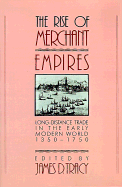Book contents
- Frontmatter
- Contents
- Preface
- Maps
- Introduction
- 1 Structural changes in European long-distance trade, and particularly in the re-export trade from south to north, 1350–1750
- 2 The growth and composition of trade in the Iberian empires, 1450–1750
- 3 The growth and composition of the long-distance trade of England and the Dutch Republic before 1750
- 4 France, the Antilles, and Europe in the seventeenth and eighteenth centuries: renewals of foreign trade
- 5 Productivity, profitability, and costs of private and corporate Dutch ship owning in the seventeenth and eighteenth centuries
- 6 The Dutch and English East India companies compared: evidence from the stock and foreign exchange markets
- 7 World bullion flows, 1450–1800
- 8 Merchant communities, 1350–1750
- 9 Economic aspects of the eighteenth-century Atlantic slave trade
- 10 Marginalization, stagnation, and growth: the trans-Saharan caravan trade in the era of European expansion, 1500–1900
- 11 The “decline” of the central Asian caravan trade
- 12 Merchant communities in precolonial India
- 13 Merchants without empire: the Hokkien sojourning communities
- Index
5 - Productivity, profitability, and costs of private and corporate Dutch ship owning in the seventeenth and eighteenth centuries
Published online by Cambridge University Press: 01 June 2011
- Frontmatter
- Contents
- Preface
- Maps
- Introduction
- 1 Structural changes in European long-distance trade, and particularly in the re-export trade from south to north, 1350–1750
- 2 The growth and composition of trade in the Iberian empires, 1450–1750
- 3 The growth and composition of the long-distance trade of England and the Dutch Republic before 1750
- 4 France, the Antilles, and Europe in the seventeenth and eighteenth centuries: renewals of foreign trade
- 5 Productivity, profitability, and costs of private and corporate Dutch ship owning in the seventeenth and eighteenth centuries
- 6 The Dutch and English East India companies compared: evidence from the stock and foreign exchange markets
- 7 World bullion flows, 1450–1800
- 8 Merchant communities, 1350–1750
- 9 Economic aspects of the eighteenth-century Atlantic slave trade
- 10 Marginalization, stagnation, and growth: the trans-Saharan caravan trade in the era of European expansion, 1500–1900
- 11 The “decline” of the central Asian caravan trade
- 12 Merchant communities in precolonial India
- 13 Merchants without empire: the Hokkien sojourning communities
- Index
Summary
INTRODUCTION
By about 1450 the oceangoing ship had been developed. Out of a mixture of northern European and Mediterranean/Arabian practice in design and rig, called “a marriage” by J. H. Parry, the three-master came into being and was first used for ocean shipping by the Portuguese and Spaniards. In principle this ship did not change until the nineteenth century, when iron and steam made completely different seagoing structures possible. Until then, the use of timber limited the size of ships. But within these restrictions a variety of types of vessels were designed after 1450. These types all were built with two or three masts and topmasts and equipped with square, lateen, and staysails. Improvement in sailing ability was made but did not have a great impact. For the operating costs of ships, changes in cargo-carrying capacity and in the number of crew on board were more important.
In this field, the Dutch made a major contribution at the end of the sixteenth century. The so-called fluyt, or flyboat, was then developed. This well-known story is connected with the city of Hoorn and Pieter Janszoon Liorno, regent and merchant as well as shipbuilder. The new feature of the oceangoing fluyt was its full concentration on cargocarrying capacity. Until this time, ships had always been designed to carry armament; gun platforms, portholes, and reinforced construction were standard. Lacking such features, the fluyt could be lightly built; it became much longer compared with its width than other types (1:4–6), and it was soon known for the simplicity of its rig.
- Type
- Chapter
- Information
- The Rise of Merchant EmpiresLong Distance Trade in the Early Modern World 1350–1750, pp. 174 - 194Publisher: Cambridge University PressPrint publication year: 1990
- 3
- Cited by



